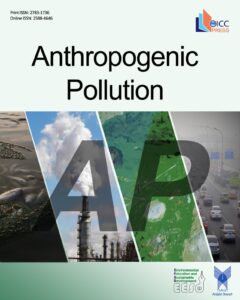Assessment of BTX Concentrations Along Hakim Expressway: A Case Study from Milad Tower to Resalat Tunnel
Authors
Abstract
This research aims to assess the concentrations of benzene, toluene, and ethylbenzene along the Hakim Expressway, from Milad Tower to Resalat Tunnel, in order to investigate the impact of traffic, a major contributor to air pollution in Tehran, and the release of volatile organic compounds (VOCs) resulting from fossil fuel burning. Conducted in the fall of 2020, the study reveals that heavy-traffic regions exhibit higher VOC levels. The accumulation of VOCs in the examined areas is influenced by wind direction and time of day. Measurements were taken during both morning and evening periods. The amount of benzene in the morning at Geisha station is 39.1 ppb and the lowest amount at Azadegan Blvd about 21.22ppb. The amount of toluene in the morning at Chamran station is 461.1 ppb and the lowest amount is 359.1 ppb at Azadegan Blvd.. The amount of Ethylbenzene in the morning at Chamran station is 2.86 ppb. These stations showed the highest values in the morning. In the evening, the highest values observed in the Gisha stations 38.2ppb the lowest amount at Azadegan Blvd 21.42. ppb. Highest amount of toluene at night were seen at Gisha station 489 ppb the lowest amount at Azadegan Blvd about 231ppb. The highest amount of Ethylbenzene was seen at Resalat tunnel 1.4 ppb and lowest amount at chamran. Benzene and toluene concentrations remained consistent between morning and night, while ethylbenzene concentrations varied. The traffic load in the sampled areas exhibited a direct effect on BTX (benzene, toluene, and ethylbenzene) concentrations.




